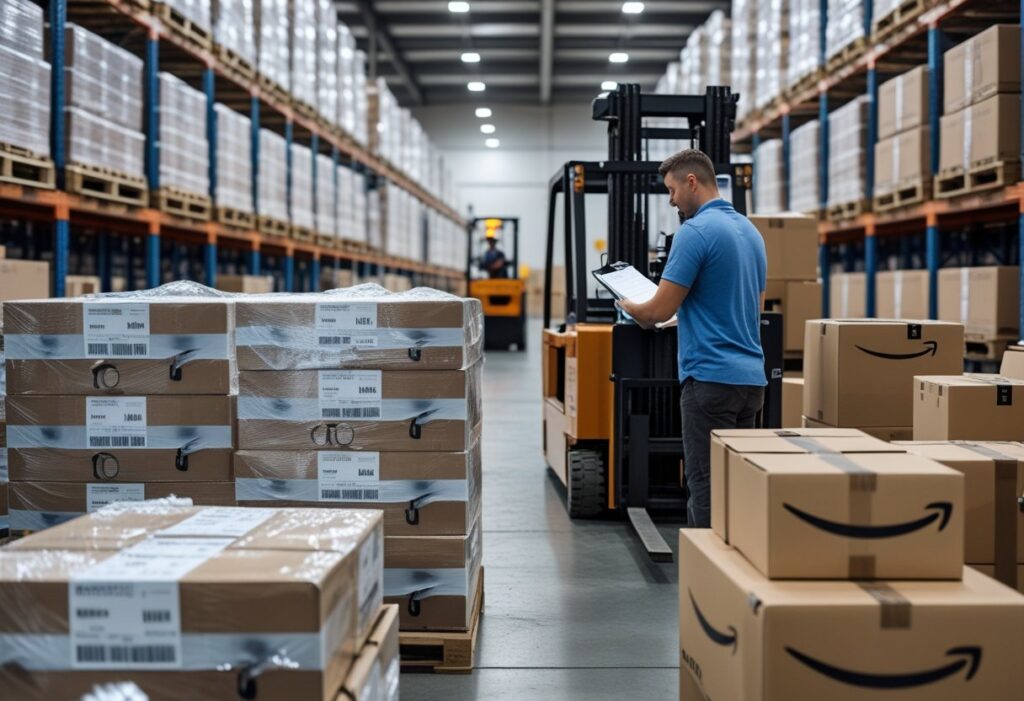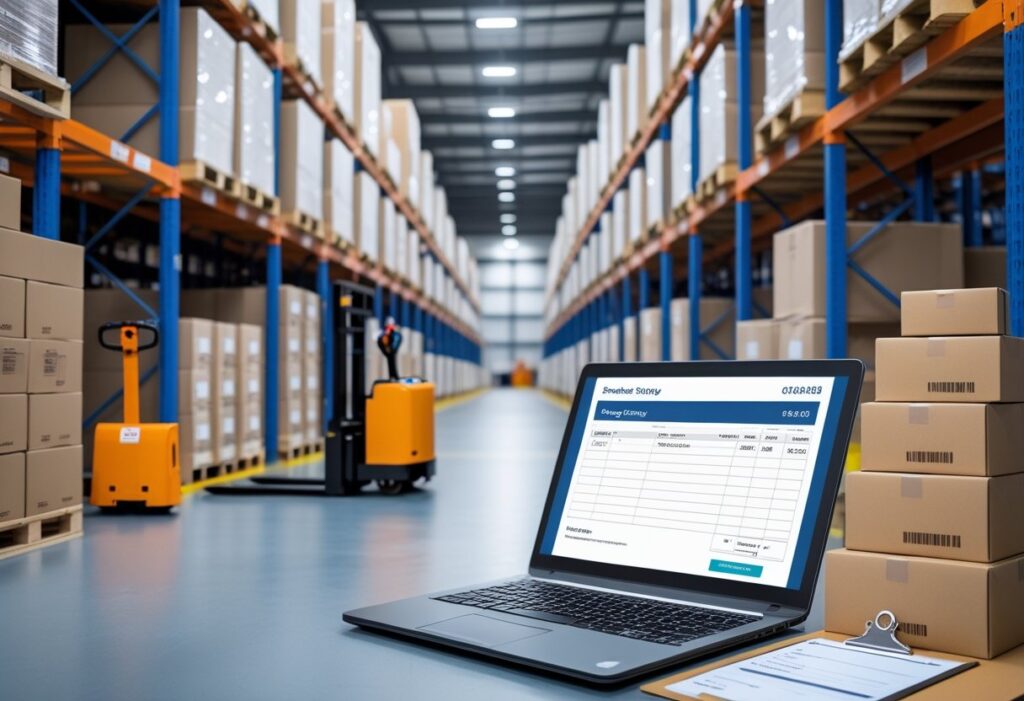When I started in wholesale for Amazon FBA, finding suppliers was only half the battle. The real success? That came from building relationships that actually lasted.
Strong supplier partnerships give you better pricing, reliable inventory, and the kind of trust you need to scale your business without constant headaches. If you treat suppliers like short-term transactions, you risk higher costs, delays, and, honestly, missing out on some big opportunities.

Approaching suppliers with professionalism really sets the tone from the start. A clear introduction, respectful communication, and consistent follow-up all show that you’re serious about your business.
Over time, that professionalism builds trust. Suddenly, it’s easier to negotiate better terms or get priority treatment when inventory gets tight.
When it comes to negotiation, I try to create win-win outcomes. I’m not just pushing for lower prices—I’ll ask about flexible payment terms, reduced shipping costs, or discounts for bigger orders.
By showing I understand their side of things, I build credibility. That’s what helps me land better deals without damaging the relationship.
Key Takeaways
- Strong supplier relationships lead to better pricing and reliable inventory
- Professional communication is the foundation for trust and long-term partnerships
- Fair negotiation secures deals without harming the relationship
First Impressions: How to Approach a Supplier Professionally
When I reach out to a new supplier, my first message is always clear, polite, and professional. I introduce myself, explain my business model, and get specific about what I’m looking for.
Suppliers want to know you’re serious, so there’s no room for vagueness. I double-check my emails before sending—little things like spelling, a professional email address, and clear contact info matter more than you’d think.
To build credibility, I’ll share basic facts about my business. For example, I’ll mention that I sell through Amazon FBA, what categories I focus on, and my interest in long-term partnerships.
This helps the supplier understand my goals and see me as more than just another inquiry. When it comes to pricing, I don’t demand discounts right away.
Instead, I ask questions like:
- Do you offer tiered pricing for larger orders?
- Are there discounts for repeat or consistent purchases?
- What is the minimum order quantity, and can it be flexible?
This way, the conversation stays positive and open to negotiation. I try to show interest in their needs, too, so it’s a balanced discussion.
Suppliers respond well when I highlight mutual benefits. If I can commit to steady orders or help move certain products faster, I’ll explain how that supports both of us.
That way, better pricing feels like a win for everyone—no one-sided deals here.
Communication Tips: Emails, Calls, and Meeting Etiquette

Whenever I reach out to a supplier, I keep emails short and clear. There’s always a greeting, the reason I’m writing, and what I need from them.
A professional tone helps avoid confusion. I also make subject lines specific—something like “Request for Updated Wholesale Pricing – [Product Name]” works well.
On calls, I jot down a few notes so I don’t waste anyone’s time. I introduce myself, state my reason for calling, and confirm next steps before wrapping up.
Focused calls show I value both their time and mine. When negotiating, I stay polite and explain my reasoning—maybe I’m planning a larger order or hoping to build a long-term partnership.
That way, I’m asking for better terms without sounding pushy. During meetings, whether in person or virtual, I dress and speak professionally.
I try to listen carefully, take a few notes, and avoid interrupting. Little things like being on time and showing appreciation really do go a long way.
Here’s a quick checklist I keep handy:
- Emails: Be clear, polite, and concise
- Calls: Prepare talking points, confirm next steps
- Meetings: Show professionalism, listen actively
- Negotiation: Focus on win-win outcomes, not just lower prices
Negotiation Strategies for Better Pricing & Terms
When I talk with suppliers, I’m looking for a deal that works for both sides. I don’t just push for the lowest price—I show how steady orders, reliable payments, and long-term business can help them, too.
Before every call or meeting, I review market prices, compare supplier offers, and figure out which terms matter most to me. That might be lower unit costs, better shipping rates, or more flexible payment schedules.
Sometimes, I’ll use simple trade-offs. For example, I might ask:
- If I increase my order volume, can you lower the price per unit?
- If I pay faster, can you extend better terms on shipping?
Being polite but direct seems to work best. I explain why a discount or better term makes sense, and I try to avoid vague requests.
To keep things professional, I always get agreements in writing. A quick recap email or contract note can prevent misunderstandings and shows I take the partnership seriously.
Here’s a quick view of the approaches I use:
| Strategy | Example Question |
|---|---|
| Volume Commitment | “If I order 500 units instead of 300, can you lower the price?” |
| Faster Payment | “If I pay within 7 days, can I get a discount?” |
| Long-Term Agreement | “If I commit to monthly orders, can you lock in this rate?” |
By balancing firmness with respect, I get better terms without hurting the relationship.
Building Trust Over Time: Consistency and Professionalism
Trust with suppliers doesn’t happen overnight. It grows when I show up consistently, keep my word, and treat every interaction with professionalism.
Small actions—like paying invoices on time and responding quickly—make a big difference. When I negotiate, I focus on respectful communication.
I’ll explain my goals, share order forecasts, and ask how we can create a win-win deal. Being open and clear helps avoid damaging the relationship.
I also make sure my requests match the value I bring. If I’m placing larger or repeat orders, I’ll ask for discounts that reflect that commitment.
This shows I’m serious about a long-term partnership, not just chasing the lowest price. Here are a few practices I stick to:
- Pay promptly to show reliability
- Communicate clearly about order needs and timelines
- Stay transparent when challenges come up
- Respect boundaries by not pushing too hard in negotiations
Sometimes I use a simple table to guide my talks:
| My Action | Supplier Benefit |
|---|---|
| Larger order commitment | Lower unit cost |
| Early payment | Better cash flow |
| Repeat business | Predictable sales |
Common Mistakes to Avoid with Suppliers
Small mistakes with suppliers can hurt both pricing and trust. When I manage my supply chain, I try to avoid these common pitfalls.
One mistake is focusing only on price. If I push too hard for discounts without considering quality, service, or reliability, I risk damaging the relationship.
Suppliers value long-term cooperation more than one-time price cuts. Another mistake is poor communication.
If I don’t clearly share my expectations, timelines, or order details, it can cause delays or errors. I make sure to confirm everything in writing and keep an open line of contact.
I also avoid inconsistent ordering. If I place random or unpredictable orders, suppliers may not prioritize me.
I try to give them forecasts or at least some notice so they can plan production and inventory. When it comes to negotiation, I’ve learned not to demand unrealistic terms.
Instead, I use tactics like:
- Asking for volume-based discounts when I can commit to larger orders.
- Requesting better payment terms instead of only lower prices.
- Offering long-term agreements in exchange for more favorable rates.
I never ignore relationship building. Treating suppliers as partners, not just vendors, helps me get better deals and smoother operations.
A little professionalism and respect really do go a long way in keeping strong, lasting partnerships.
Conclusion – Turning Suppliers into Long-Term Business Partners
Honestly, building strong supplier relationships takes time. They don’t just appear out of thin air.
It’s all about keeping communication open and treating people with respect. Fair negotiations matter, but so does showing you care about their side of the deal.
When I see my suppliers as partners, not just vendors, things start to click. The foundation gets stronger for both of us.
When I’m negotiating wholesale pricing, I try to keep it balanced. I’ll ask about volume discounts, longer contract terms, or maybe shared shipping costs instead of just demanding the rock-bottom price.
That way, I save a bit, but they know I’m not just out to squeeze every penny. It’s a little give, a little take.
Here’s what’s actually worked for me:
- Ask questions instead of making demands – Like, “What pricing options do you have if I increase my order?” It’s way less confrontational.
- Offer flexibility – Sometimes I’ll shift order sizes or delivery dates if it helps them out.
- Show loyalty – I remind suppliers I’m not a one-and-done customer. I’m in it for the long haul.
I try to keep my communication professional, but not stuffy. Quick replies, paying on time, and sharing honest feedback all add up.
Those little things—like answering emails fast or clearing invoices—signal that I’m reliable. Suppliers notice.
Frequently Asked Questions
When I’m working with suppliers, clear communication and fair negotiation are my go-tos. I try to be transparent and plan for the long term, which helps build real partnerships that actually help my Amazon FBA business grow.
What are the best strategies for Amazon FBA sellers to approach suppliers for the first time?
I always kick things off with a professional intro—just a quick note about who I am, what I sell, and why I’m reaching out.
I keep it short and show I’ve done my homework on their company. It’s a simple way to stand out as someone who’s serious.
How can I negotiate better pricing with suppliers for my wholesale arbitrage business?
I usually start by asking about bulk discounts or tiered pricing. No need to lowball right away.
Letting suppliers know I’m in for repeat business seems to open more doors. They’re more willing to talk better terms if they see I’m not just here for a quick score.
If I need to push further, I’ll offer something in return—like faster payments or bigger orders. It’s about finding value for both sides.
What are some effective ways to build and maintain trust with suppliers?
I’m upfront about what I need, even if my first order isn’t huge.
Paying on time and keeping promises matters more than you’d think. Those small actions really build trust.
If there’s a problem, I try to tackle it head-on and work together on a fix. Blaming doesn’t get anyone anywhere.
Can you suggest tips for maintaining long-term partnerships with suppliers in the Amazon FBA ecosystem?
I like to set up regular check-ins—just to chat about what’s working, what’s not, and what’s coming up.
Sharing my growth plans helps too. It lets suppliers prep for future orders and feel like they’re part of the ride.
And hey, celebrating milestones—like hitting a new sales target—goes a long way in keeping things positive.
What communication techniques should I use to strengthen my relationship with suppliers?
I set expectations clearly from the start—order sizes, delivery times, payment terms, all of it.
Email or messaging apps make it easy to keep things organized and avoid confusion.
And I try to answer questions quickly. Just being responsive shows I respect their time and want the relationship to work.
How important is professionalism in supplier relationships, and how can I ensure I’m always professional?
Every time I talk to a supplier, I know it’s shaping my business reputation. Professionalism isn’t just a buzzword—it really does help build respect and trust.
I try to stay polite, organized, and ready for each conversation. Even things like writing a clear subject line in an email or replying on time can actually matter more than you’d think.
If I mess up, I admit it pretty quickly and do what I can to fix things. That honesty usually keeps the relationship on solid ground.


